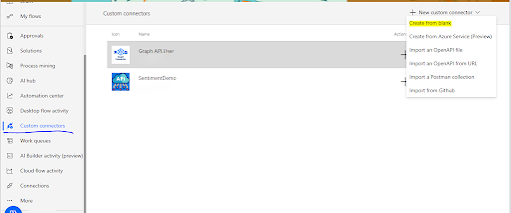Introduction to Power Automate Desktop
Power Automate Desktop (PAD) is Microsoft’s robotic process automation tool that enables users to automate repetitive desktop and web-based tasks without any coding. It belongs to the Power Automate family, allowing seamless connection between desktop automation and cloud-based workflows.
What Power Automate Desktop Does
PAD records and replays user actions such as mouse clicks, keyboard input, file operations, and navigation to create automated flows. Through a drag-and-drop interface, users can build flows to handle daily work like generating reports, reading Excel data, sending emails, or interacting with web pages. It works well with Excel, Outlook, SharePoint, browsers, and even legacy systems without APIs.
Integration with Cloud Flows
PAD connects with Power Automate cloud flows to enable hybrid automation. For example, when a file is added to SharePoint, a PAD flow can run on your desktop to process it locally. This approach combines local and cloud automation for a complete workflow.
Licensing and Cost
Microsoft offers different licensing options depending on the type of automation. The following pricing is based on the official Microsoft Power Automate pricing page.
Attended RPA runs only when a user is logged in and interacting with the machine.
Unattended RPA runs automatically without user involvement, suitable for server or background automations.
Self-hosted bots run on your own devices or virtual machines.
Microsoft-hosted bots run on virtual machines managed by Microsoft for reliability and scalability.
Choosing the Right License
For individual or small-scale use, the free attended version included with Windows is enough. For business-grade automation that needs to run without user input, the Unattended Process or Hosted Process plans are recommended. Enterprises that use AI Builder or complex workflows benefit most from the Premium plan.
Main Components of Power Automate Desktop
1. Flow Designer
Visual workspace where you build automation flows using drag-and-drop actions. It lets you organize steps, loops, conditions, and sub-flows in a structured layout.
2. Recorder
Captures mouse clicks, keystrokes, and navigation on your desktop or web applications. Converts user actions into automation steps automatically.
3. Actions Pane
Contains hundreds of prebuilt actions, such as launching applications, reading/writing Excel files, sending emails, or interacting with web pages. Drag actions from this pane into the flow.
4. Variables Pane
Stores data used in flows, like filenames, extracted text, counters, or flags. Allows you to manipulate data dynamically within your automation.
Conclusion
Power Automate Desktop brings automation directly to your Windows system with minimal setup. The free edition helps individuals eliminate repetitive work, while paid plans unlock advanced automation that operates continuously and integrates deeply with Microsoft’s Power Platform. It is an effective way to combine desktop and cloud automation within one unified framework.
Scenario Questions and Answers
Q1: You have a daily Excel report that needs to be emailed to multiple recipients. How would you automate it using Power Automate Desktop?
-
Use PAD to launch Excel and open the report.
-
Read the required data using Excel actions.
-
Save the file locally if needed.
-
Use PAD’s Outlook actions to create an email, attach the report, and send it to recipients.
-
Schedule this PAD flow through Windows Task Scheduler or trigger via a cloud flow for automation.
Q2: A SharePoint file is added daily. You need to process it in Excel and send a summary email. Which licensing plan is required if no user should be logged in?
You need Unattended RPA (Power Automate Process per bot or Hosted Process) because the automation must run without a user session. Attended licenses cannot run unattended flows.
Q3: You want to run two bots simultaneously to process multiple reports at the same time. What licensing is required?
Two Power Automate Process (Per Bot) or Hosted Process (Per Bot) licenses are required—one license per concurrent unattended bot.
Q4: A process involves both desktop Excel automation and triggering from a SharePoint cloud flow. How do you connect them?
-
Create a PAD desktop flow to handle the Excel automation.
-
Create a Power Automate cloud flow triggered by SharePoint file creation.
-
Add a “Run a desktop flow” action in the cloud flow to invoke the PAD flow on the target machine.
Q5: Can you use the free PAD version to automate tasks while you are not logged in?
No. The free version only supports attended automation, meaning the user must be logged in. For unattended automation, a per-bot or hosted bot license is required.



Comments
Post a Comment